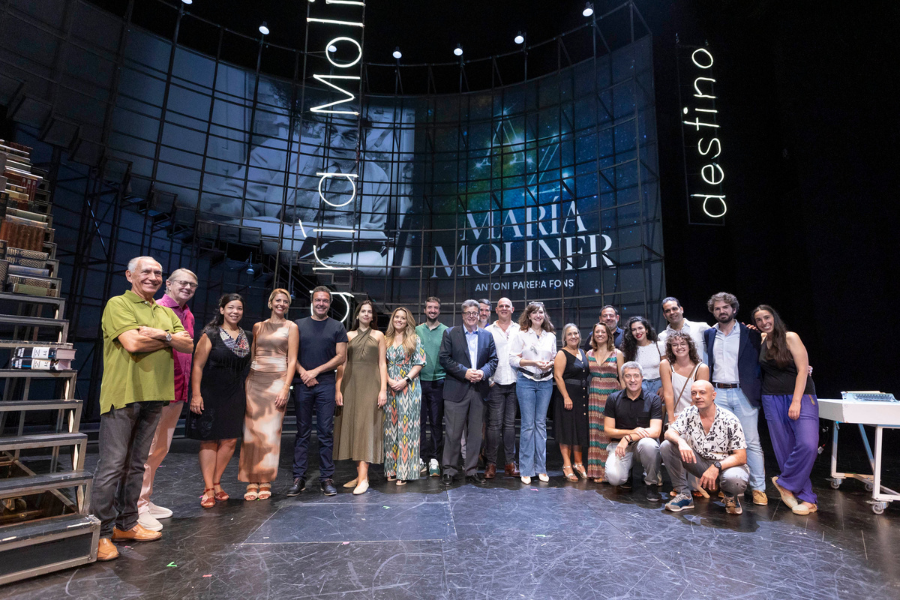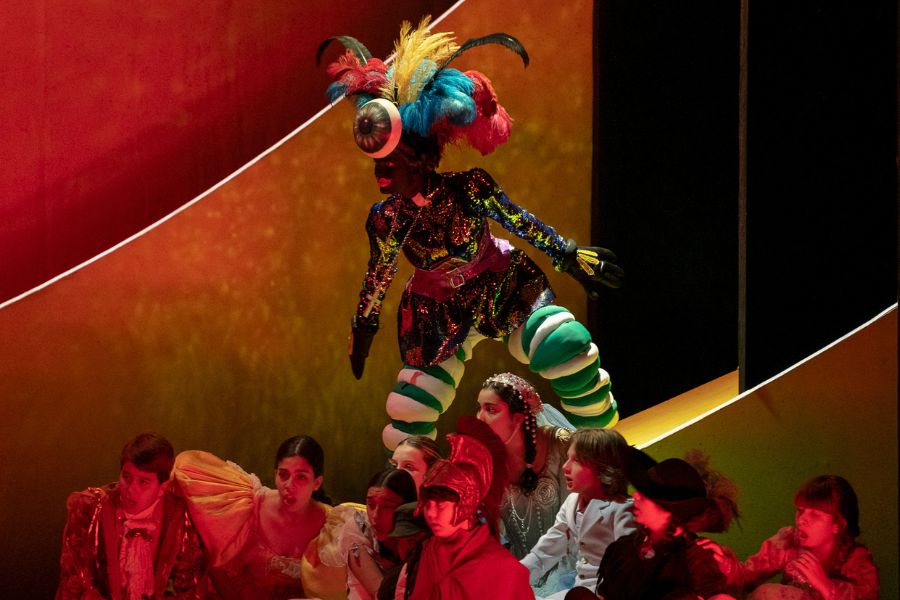Bajo la lupa: Suat Arikan, General Director of the Istanbul Opera, Turkey: “A great opera can be successfully staged on a low budget and with creative and interesting ideas”

In the Turkish capital, the concept of “opera” has a long history dating back to the 17th century. From now on, the lyrical genre has had a development and a promotion in Turkey that begins with education in schools. In this exclusive interview, Suat Arikan, general director of the Istanbul Opera, recounts the beginnings of opera in his country, visions for the future and the importance of adapting to times and contingencies.
by Ximena Sepúlveda
How did the Istanbul Opera start?
The word “opera” was first used in 1670 in the poems of Eremya Kömürcüyan in the Ottoman Empire. During the reign of Mehmed IV, it had been planned to bring an opera for a palace wedding in 1675, however it did not happen. Yirmisekiz Mehmed Celebi was able to stage opera performances of his works in 1720. Until the 18th century, the Ottoman ambassadors described this art that they had seen in Europe, in his works.
In 1797, Selim III saw an opera performance in the palace. When Abdulmejid wanted young Turks to learn operas performed by Europeans at Beyoğlu, he assigned himself to Giuseppe Donizetti. Mahmud II supported the opening of private theaters in Istanbul. While initially French artists made up the majority, from the 19th to the 20th centuries they were Italian opera singers.
Opera activities continued in Istanbul with non-Muslim initiatives such as the National Ottoman Operetta Company, Arşak Haçaduryan and Tigran Chukhajian. Abdul Hamid II was the most interested in opera among the sultans. He hosted Italian companies at the Yıldız Palace and showed his interest in opera by hiring permanent officers. It is seen that ambassadors sent to European countries during the Ottoman Empire, mentioned the word “opera” in the embassy books that they prepared and presented to the sultan when they returned to the country. In the first theater built by an Italian named Bosco in 1840, Gaetano Donizetti‘s Belisario was the first opera performed, the texts of which were translated into Turkish.
In 1844, Bosco’s theater was ceded to Tütüncüoğlu Michael Naum Efendi. Naum Efendi served the people of Istanbul for twenty-six years. The first opera performed at the Naum Efendi Theater (December 29, 1844) was Gaetano Donizetti’s Lucrezia Borgia. Instead of this theater, which caught fire in 1946, Naum Efendi founded a new theater where the present Tokatlıyan İş Hanı is located, and Sultan Abdulmejid came to see his first performance.
The public recognition of the opera came only after the Republic of Turkey. In 1936, artists began training at the Ankara State Conservatory. German artist Carl Ebert was called in to support the organization. The practices began in the practice stage of the State Conservatory in 1940 and there, the first institutional opera was Bastien and Bastienne by W.A. Mozart. Operas such as Un Ballo in Maschera, La bohème and The Marriage of Figaro were staged under the direction of Carl Ebert. Ebert left Turkey in 1947.
After Ebert, the activities continued with Muhsin Ertuğrul. The “exhibition house” building, which was used for exhibitions in the past, was assigned to the State Opera and Ballet. Beginning in 1948, regular performances were offered at the reorganized Opera.
Muhsin Ertuğrul and Aydın Gün, who left the Ankara Opera in 1959, took over the artists from the Opera Studio that they had previously established in Istanbul and, with the help of the Istanbul Municipality, established the Istanbul City Opera in the Tepebaşı Dramatic Theater, within the City Theaters. With the opening of the Istanbul Palace of Culture in 1969, all the staff moved here. The State Opera and Ballet Directorate General was founded in 1970 and became an independent institution from the State Theaters. The State Opera and Ballet was organized in Istanbul in 1971 and in Izmir in 1979. In recent years, addresses have been founded in Mersin, Antalya and Samsun.
Is there a serious interest in opera among the younger generations?
In many European countries, they are panicking over the question “Who will go to operas in ten years?” In our country, perhaps due to the fact that it has a young population, there is no such fear. Especially on Saturdays, our 4 pm performances are filled with young people in blue jeans.
Do you have a continuous opera season?
Yes, traditionally our season starts in October and ends in June of each year. As an exception, the next season starts in September.
Is music taught in public schools?
Elementary schools have basic music and painting classes. For about ten years, we held a painting competition with the theme “What do you think when you hear the words opera – ballet?” for children between 7 and 11 years old. We received thousands of paintings from different schools across the country. To be successful, they go to opera houses in cities where opera or ballet performances are held or watch opera and ballet performances online.
Do you offer scholarships for young talents?
These young talents can obtain scholarships from organizations and private equity institutions such as foundations and associations.
Have you been financially hit by the pandemic?
Our institution has 100% state support. During the pandemic, subsidies were paid without interruption, even when there were no performances or box office revenues.
Do you plan to perform the same repertoire that you had selected before the pandemic or have you changed your plans?
We had home concerts and online performances during the intense period of the pandemic. When the measures were loosened, we had programs with groups that were not crowded for small amounts of audience. While we had opera and ballet performances changing their direction, we continued to maintain our art in terms of quality and quantity. And recently, we have planned to perform operas with symbolic staging above, without using the orchestra pit. Examples of these are Fidelio, Norma, Così fan tutte.
What are the least expensive operas to perform on stage?
This type of assessment is not possible, but the budget for works that have many scenes, take place in different environments, are very crowded and contain fantastic elements, can be high. Despite all these predictions, even a great opera can be successfully staged on a low budget and with creative and interesting ideas.
How big is your theater, what is the seating capacity?
We have two opera stages, one on the European side and one on the Asian side. The one on the Asian side is a very nice opera house with little seating capacity (450 people), boxes and beautiful acoustics. Süreyya Pasha had it built himself just for Donizetti’s opera and operetta performances.
The opera house on the European side with a capacity of 1,300 seats was a symbolic building of our republican history and has been demolished to build a new one. We are very excited that the new opera house, which we will be reassembling after thirteen years, will provide much larger facilities (capacity for 2000 seats) and will beautify our next season.
Are your operas always performed in the original language?
Operas that were performed in Turkish during the first 20-25 years of our opera history of more than 60 years, have been performed in their original language for 40 years. There are performances in Italian, French, German, English (The Turn of the Screw, The Rake’s Progress) even Russian (Prince Igor) and Czech (Jenůfa).





